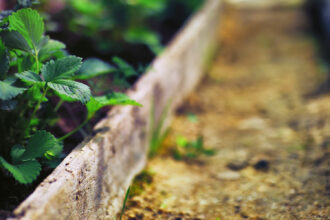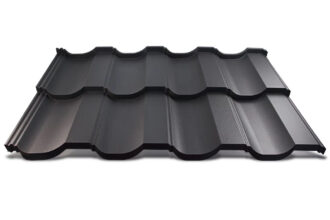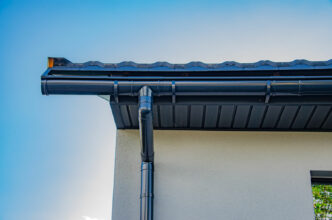In order for rainwater to be properly and effectively drained from the roof, it is necessary to use an appropriate gutter system. The gutter systems can be made of various materials, which differ in physical properties and aesthetic values.
PCV gutter systems
Gutter systems made of plastics are covered with acrylic, titanium oxide or are stabilized with ultraviolet rays. These coatings are used to increase the resistance of PVC to weather conditions, mainly to the harmful effects of sunlight, as well as polluted air and acid rain. Plastic is usually colored in the mass. As a result, the gutters do not change color where they are scratched. The individual elements of the PVC gutter systems are lightweight. They are connected by means of latches with a gasket, couplings and clasps with a rubber gasket, or they are glued together permanently. They do not require maintenance and are resistant to rays. They are characterized by high thermal expansion.
Copper gutter systems
Copper guttering is made of copper sheet, which can be coated with zinc or acrylic. There are also systems in which the copper sheet is not covered with anything. The individual elements of such gutter systems are overlapped and soldered on both sides. Copper gutter systems are used in historic buildings as well as in single-family houses covered with copper sheets or ceramic tiles. However, such systems should not be used for roofs covered with aluminum or steel sheet, because the flowing water may lead to corrosion of copper gutters, and the unprotected copper sheet will be covered with copper oxide, i.e. a patina, turning greenish.
Aluminum gutter systems
Aluminum guttering is made of anti-corrosive aluminum sheet, and then varnished or painted in various colors. Aluminum gutter systems are connected with rivets and sealed with aluminum glue, special paste or silicone. They can also be bent from sheet metal and cut to the appropriate length – even up to 30 m – directly on the construction site – using a special machine. Aluminum gutter systems are resistant to weather conditions and corrosion, have a smooth surface, but are burdensome in flashing. Aluminum gutter systems are the lightest of all types of gutter systems.
Titanium-zinc gutter systems
Titanium-zinc gutter systems are made of a zinc alloy with the addition of titanium and copper. They have a shiny appearance and a silvery gray color. Individual elements are connected by soldering on both sides, and in some cases also sealed with paste. Originally made of titanium-zinc, the guttering it is very durable and does not require additional protection or maintenance. Such gutter systems are factory-patinated and their durability can exceed 100 years.
Steel gutter systems
Guttering made of steel sheet is covered with a protective layer of zinc and an additional protective layer made of pural, plastisol or polyester. As a result, they are resistant to mechanical damage, corrosion and fading. Steel gutter systems are one of the most common. They are resistant to corrosion, weather conditions and mechanical damage. They have a long service life and can be used in virtually any building and roof. They are available for sale in a wide range of colors, but may be difficult to work with. Gutters covered with plastisol are connected with couplings or latches with a rubber seal. Installation may be facilitated by a special snap-in construction of gutter and wall hooks.
Wooden gutter systems
Wooden gutter systems are used in wooden houses with thatched roofs. This is a unique guttering, produced against special order.


